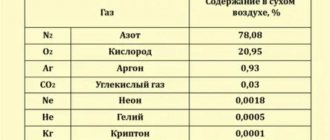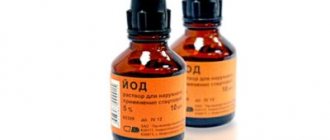Changes in tonometer readings occur under the influence of stress, physical and psycho-emotional stress.
But often deviations in pressure and temperature from the norm indicate the development of the disease.
The article will tell you what low temperature and pressure mean.
Dangerous factors of changes in thermometer readings
Normal body temperature is 36.6 degrees (in the evening this figure can rise to 37 degrees). Normal blood pressure is around 120/80 mmHg.
But sometimes these values decrease or increase. At the same time, your well-being changes. The reasons for deviations may be different.
One of the most harmless ones is fatigue. But often the condition worsens with the development of serious illnesses. The speed of biochemical reactions depends on the level of thyroid hormones. If, for no apparent reason, a person begins to suffer from weakness and low blood pressure, this indicates the presence of endocrine disorders. At the same time, weight changes, apathy and memory impairment are also observed.
Diabetes mellitus is accompanied by a decrease in the rate of glucose oxidation. As a result, body temperature drops slightly. This pathology is also characterized by frequent urge to urinate, severe thirst, and decreased sensitivity in the legs and arms.
If you experience low body temperature and high blood pressure at the same time, this may indicate the presence of liver disease.
This condition is explained by the fact that the body’s ability to absorb carbohydrates is reduced.
The glycogen content in the blood decreases. A deficiency of this substance is perceived by the body as a critical situation. The response is to try to reduce energy expenditure by lowering body temperature.
People who suffer from heart failure usually experience low blood pressure, low temperature, weakness, and dizziness. A slightly low temperature with unstable blood pressure may be the first symptom of developing oncology. Over time, the thermometer and tonometer readings drop even lower due to weakening of the body.
Sometimes low temperature and blood pressure occur after taking sedative medications. Long-term use of certain medications leads to a weakening of the human body and a decrease in the tone of the walls of blood vessels.
So, low or high blood pressure and low body temperature may have different causes. If this condition continues for more than three days, it is recommended to consult a doctor. Timely diagnosis and treatment will help quickly eliminate the unpleasant manifestations of the disease and avoid complications.
Reduced body temperature
Iron deficiency
44385 09 February
IMPORTANT!
The information in this section cannot be used for self-diagnosis and self-treatment.
In case of pain or other exacerbation of the disease, diagnostic tests should be prescribed only by the attending physician. To make a diagnosis and properly prescribe treatment, you should contact your doctor. Low body temperature: causes of occurrence, what diseases it occurs with, diagnosis and treatment methods.
Definition
Low body temperature, or hypothermia, is a disorder of heat metabolism, manifested by a decrease in body temperature due to exposure to low temperatures and/or a decrease in heat production and an increase in heat output.
There are several mechanisms for active heat production.
Mandatory heat production
- heat produced as a result of normal physiological and metabolic processes. It is enough to maintain normal body temperature in a comfortable ambient temperature.
Additional heat production
activates when the ambient temperature drops and includes:
- non-contractile thermogenesis
, which is carried out by the breakdown of brown fat. Brown fat is present in large quantities in newborns and protects them from hypothermia. In adults there is little of it, it is localized in the neck, between the shoulder blades, near the kidneys; - contractile thermogenesis
, which is based on muscle contraction.
When the body becomes hypothermic, muscle tone (tension) increases and involuntary muscle tremors appear.
Passive heat retention is carried out using subcutaneous fatty tissue.
The rate of metabolic processes and adaptation reactions is influenced by hormones of the adrenal glands and thyroid gland, and the center of thermoregulation is located in the hypothalamus.
For a person, the comfort zone is considered to be the air temperature range from +18°C to +22°C, subject to light clothing and normal physical activity.
There is a distinction between central body temperature (maintained in the internal organs and central vessels at 36.1–38.2°C) and the temperature of peripheral tissues (extremities, body surface) - normally it is tenths of a degree lower than the central temperature.
Central body temperature is measured in the rectum, external auditory canal, and mouth. In a medical facility, it is possible to measure temperature in the lumen of the esophagus, in the nasopharynx, and in the bladder. Peripheral temperature can be measured on the forehead or armpits.
In general, body temperature indicators are individual and each location has its own normal range. Body temperature changes throughout the day. Due to the intensity of metabolic processes, young children have a higher normal temperature level. The metabolism of older people is slow; the internal temperature can normally be at 34–35°C.
Varieties of low temperature
A decrease in temperature can be endogenous (with pathology of internal organs and imperfect thermogenesis) and exogenous (depending on environmental conditions).
An exogenous decrease in temperature includes drug-induced hypothermia. Its task is to reduce the functional activity and metabolism in organs and tissues in order to increase their resistance to oxygen deficiency. It is used in the form of general controlled hypothermia when there is a need to temporarily slow blood circulation; and local controlled hypothermia of individual organs and tissues.
Drug hypothermia is used during open operations on the heart and large vessels, for ischemic stroke, injuries of the central nervous system (brain and spinal cord), and for severe oxygen starvation of newborns.
The severity of a person’s condition is assessed by the level of decrease in core temperature and clinical manifestations.
At a low temperature (36.5–35°C) a person can feel quite well. It follows from this that she is a variant of the norm for him. If a person feels unwell, it is necessary to look for the cause of the drop in temperature.
Body temperature below 35°C is considered low.
Low temperature is detected:
- mild severity (35.0–32.2°C)
, in which drowsiness, increased breathing, heart rate, and chills are observed; - moderate severity (32.1–27°C)
– a person may become delirious, breathing slows down, the heartbeat slows down, reflexes decrease (reaction to an external stimulus); - severe severity (below 27°C)
- a person is in an extreme degree of depression of consciousness (in a coma), blood pressure is reduced, reflexes are absent, deep disturbances in breathing and heart rhythm are noted, the balance of the internal environment of the body and all metabolic processes are disturbed.
Possible causes of low temperature
Possible causes of hypothermia include:
- damage to the central nervous system;
- decreased muscle mass;
- physical fatigue;
- decrease in the speed of metabolic processes;
- pregnancy;
- period of convalescence after a protracted illness;
- dysregulation of vascular tone;
- various intoxications, including alcohol;
- exposure to medications, including overdose of antipyretics;
- intravenous infusion of large volumes of unheated solutions;
- hypothermia in conditions of low air temperature;
- prolonged exposure to wet or damp clothing;
- prolonged exposure to cold water, on cold objects, etc.
All of the above factors can lead to disruption of thermoregulation, decreased heat production, and increased heat loss.
What diseases cause low temperature?
Body temperature can decrease with paresis and paralysis of muscles and/or a decrease in their mass that occurs due to diseases (syringomyelia) and spinal cord injuries, damage to the nerve fibers innervating the muscles, calcium deficiency, hereditary diseases (Erb-Roth muscular dystrophy, Duchenne).
A slowdown in metabolism occurs with chronic insufficient function of the adrenal glands (for example, in autoimmune processes) and the thyroid gland (hypothyroidism), diffuse diseases of the liver, kidneys, with a significant decrease in glucose levels (hypoglycemia), with reduced hemoglobin and/or a decrease in the number of red blood cells (anemia) , with insufficient nutrition, severe exhaustion (cachexia) and thinning of subcutaneous fat.
Violation of thermoregulation is observed with traumatic, medicinal or toxic effects on the hypothalamus.
Hypothermia can occur with extensive multiple trauma or during a systemic infectious process (sepsis).
Which doctors should I contact if I have a low body temperature?
To save a person with severe hypothermia, an emergency medical team must be called.
If a person has recorded a decrease in body temperature by 1–2°C in relation to his individual norm, this condition persists for a long time and is not associated with hypothermia, he should consult a therapist, and, if necessary, a neurologist or endocrinologist.
Diagnostics and examinations for low body temperature
Diagnosis of low body temperature consists of examining and interviewing the patient, measuring body temperature and blood pressure, and assessing blood oxygen saturation (pulse oximetry, blood gas testing).
To identify disturbances in the functioning of organs and systems, the following laboratory and instrumental studies may be prescribed:
- clinical blood test;
Low temperature and blood pressure
For hypotension
Reduced readings on the thermometer and tonometer are characteristic of hypotension.
In this case, the state of health usually worsens for a long time. There are many people whose blood pressure and temperature are below the established standards.
But at the same time they are efficient and energetic, they do not show any deviations in their health. For this category, underestimated indicators are considered the norm.
But if a person has always had a temperature of 36.6 degrees and a blood pressure of about 120/80 mmHg, and recently these values have decreased, we can talk about the development of hypotension.
The development of hypotension is caused by various reasons:
- severe stress;
- liver diseases;
- high psycho-emotional load;
- serious blood loss;
- chronic fatigue;
- disturbed sleep patterns;
- low hemoglobin level;
- cardiovascular pathologies;
- neurological abnormalities;
- changes in hormonal levels. For example, due to pregnancy, taking hormonal medications;
- prolonged and intense physical activity. Many miners, heavy industry workers, and athletes suffer from hypotension.
At low pressure and temperature values, the patient feels chilly and drowsy. The skin turns pale, the limbs become cold. With further development, the disease is aggravated by fainting and headaches.
To improve your health with low blood pressure, you need to identify the cause of hypotension. To do this, you need to see a doctor. At the initial stage of the disease, soft therapy is used, which is based on the principles of homeostasis.
Healthy eating is the key to health
If hypotension occurs as a result of severe emotional and physical exhaustion, fatigue, it is easy to improve your health by following a number of simple rules:
- healthy eating. To create an internal reserve of strength to fight pathology, you should eat foods that are rich in minerals and vitamins;
- full sleep, which lasts at least eight hours. It is important that the energy spent during the day can be fully restored;
- compliance with the daily routine. Allows you to stabilize the processes occurring in the human body;
- Take regular walks in the fresh air and do light jogging. All this will help restore elasticity to the blood vessels, slightly increase body temperature and tonometer readings;
- taking herbal sedatives and antidepressants;
- avoidance of stressful situations.
Doctors often recommend stimulant medications to increase body temperature and blood pressure. These include caffeine-containing tablets, natural honey, raspberry tea, Chinese lemongrass, hawthorn, eleutherococcus, and ginseng.
Sometimes it is easy to overcome hypotension at the initial stage of its development by revising your lifestyle and nutrition. It's much better than taking hypertension pills. Because the body recovers on its own.
For hypertension
With hypertension, the temperature rarely decreases. If the thermometer readings are below normal, this indicates the presence of a serious pathology.
For example, about heart problems, endocrine disorders. Often this condition is observed with vegetative-vascular dystonia.
Low temperature and high blood pressure occur when there is a malfunction in some organs. For example, with pathologies of the thyroid gland, adrenal glands, and impaired renal function.
Often, hypertensive patients try to improve their well-being by independently selecting medications. This cannot be done. Otherwise, the condition can get much worse. It is worth contacting a highly qualified endocrinologist.
What to do if your blood pressure rises and your body temperature drops?
First of all, the doctor recommends finding out the cause of the jump in blood pressure. This symptom is much more dangerous than a decrease in thermometer readings. When the regulation of the nervous system gets out of control, such a pathological change can cause a crisis state. This significantly increases the risk of stroke and heart attack.
In addition to the classic history taking and visual examination, the specialist will refer the patient for a comprehensive diagnosis of the body. For high blood pressure and low body temperature, the following are recommended:
- physical examination (detection of breathing noises);
- electrocardiogram (analysis of the performance of the heart muscle);
- ultrasound examination (checking the patency of blood vessels, arteries, veins);
- x-ray (determining the size of the ventricles of the main “motor” of the body).
It would be a good idea to visit an ophthalmologist. Often the main indicator of the disease is negative changes in the fundus. If during such studies no heart pathologies are detected, then the patient is referred to an endocrinologist.
High blood pressure and low body temperature, in combination with increased appetite, general weakness, problems with skin and nails, usually indicate diabetes mellitus. What to do in this case? You will have to donate blood and urine for analysis. Based on the results of laboratory tests, the doctor determines the level of sugar and glycated hemoglobin.
The influence of various sedatives can be placed in a separate group. Often people, noticing high blood pressure and high pulse, begin to uncontrollably take various pharmacological agents, thereby aggravating the problem and causing a drop in temperature. Therefore, it is important to honestly tell the doctor about any methods of therapy that were used by the patient, the decoctions and tinctures that were drunk.
Diagnostics
Visually, even the most experienced doctor is not able to accurately diagnose pathology.
After all, there are many diseases that are characterized by low temperature, low or high blood pressure. Therefore, the endocrinologist prescribes a series of examinations based on the patient’s clinical picture and complaints. An ultrasound of the thyroid gland is usually performed.
They are also sent to donate blood to determine the level of thyroid hormones. If there is a suspicion of kidney pathology, a general analysis of urine, a biochemical blood test, and an ultrasound of the kidneys are done.
Video on the topic
Why does the pressure fluctuate? Why are high and low blood pressure dangerous? Answers in the video:
Thus, a low temperature in combination with high or low blood pressure may indicate the development of a serious illness. Therefore, you should not hesitate to visit an endocrinologist. The sooner the pathology is diagnosed and an effective treatment regimen is selected, the faster your health will improve.
Immunity® - innovation in the treatment of human hypertension
- Eliminates the causes of pressure disorders
- Normalizes blood pressure within 10 minutes after administration
To learn more…











